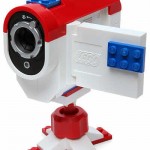Virtual-Reality Scent System Fools Flavor Sense!
What you see and smell is what you taste…

Photo: University of Tokyo
Sights, sounds, and more recently, touch are commonly employed to create and enhance virtual-reality (VR) experiences. But the sense of smell is rarely a factor. A small group of researchers at the University of Tokyo is working to change that by integrating the sense of smell and sight in a way that alters a person’s perception of taste. Their VR system was able to trick people who were eating a plain cookie into thinking the cookie was of whatever flavor they had selected. The group is making use of the fact that taste is affected by what we see, hear, and smell, as well as the texture of the food, among other things.
“We are using the influences of these sensory modalities to create a pseudo-gustatory display,” says Takuji Narumi, an assistant professor at the University of Tokyo. “The aim is to have subjects experience different tastes through augmented reality by only changing the visual and olfactory stimuli they receive.” Here’s a video: To do this, the Tokyo team created a system dubbed the Meta Cookie, in which a plain cookie was stamped with an edible marker that allowed machine vision software to track it easily. The experiment also used a computer-controlled olfactory head-mounted display, or HMD, which incorporated a system that overlaid images onto the cookie and a marker detection unit. The olfactory unit employed seven scent-filled plastic bottles fitted with air pumps and tubes that delivered individual aromas to the subject’s nose. An additional air pump was used to dilute the amount of scent the subject received. Experimental subjects were asked to choose a cookie flavor but were given a plain cookie and were told to observe it before eating it. A webcam in the marker detection unit picked up the pattern on the cookie and calculated the cookie’s position and orientation, as well as the distance between the cookie and the subject’s nose. This information was used to adjust the image of the cookie, which had already been overlaid with an image of the chosen flavor.
Photo: University of Tokyo
Trackback from your site.



